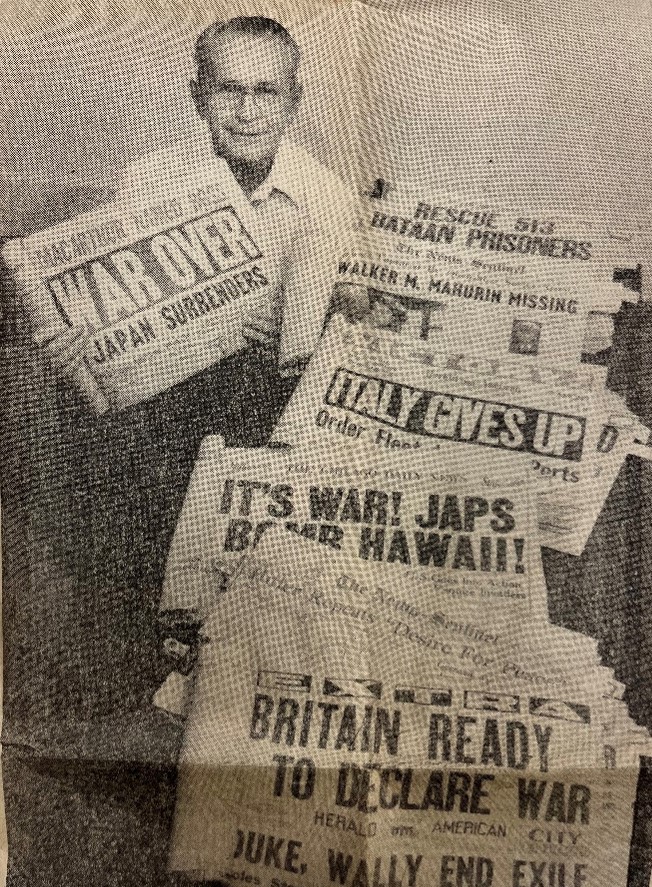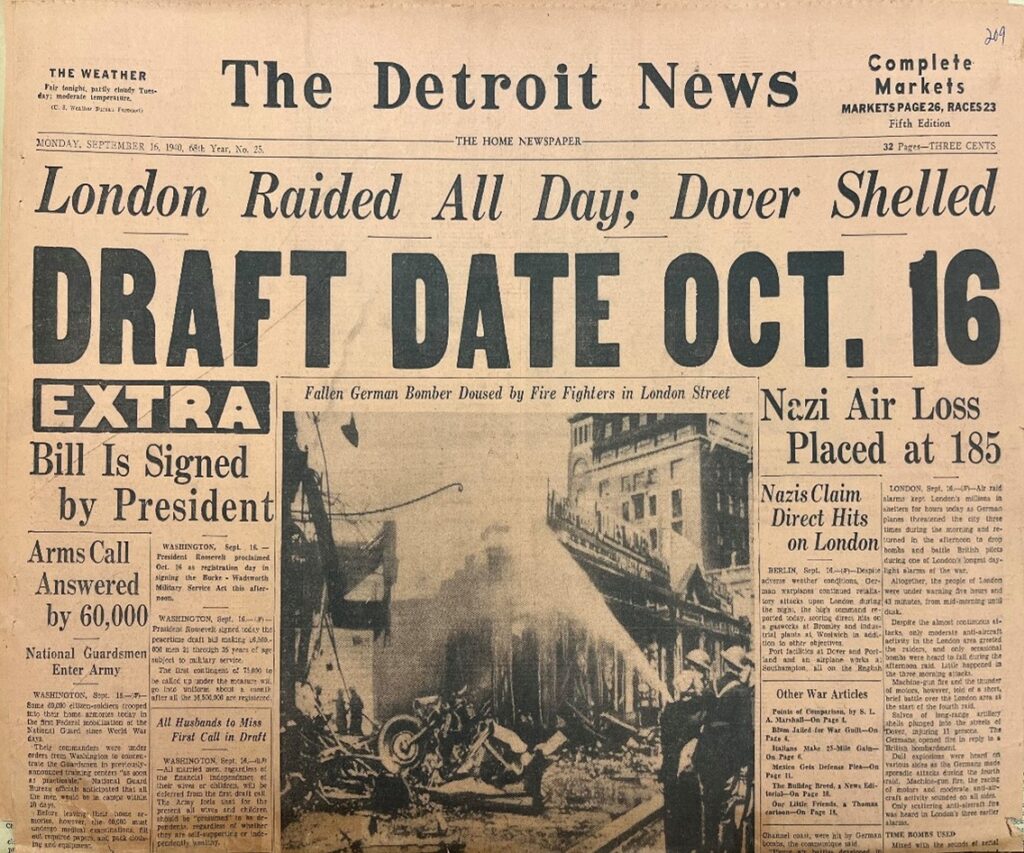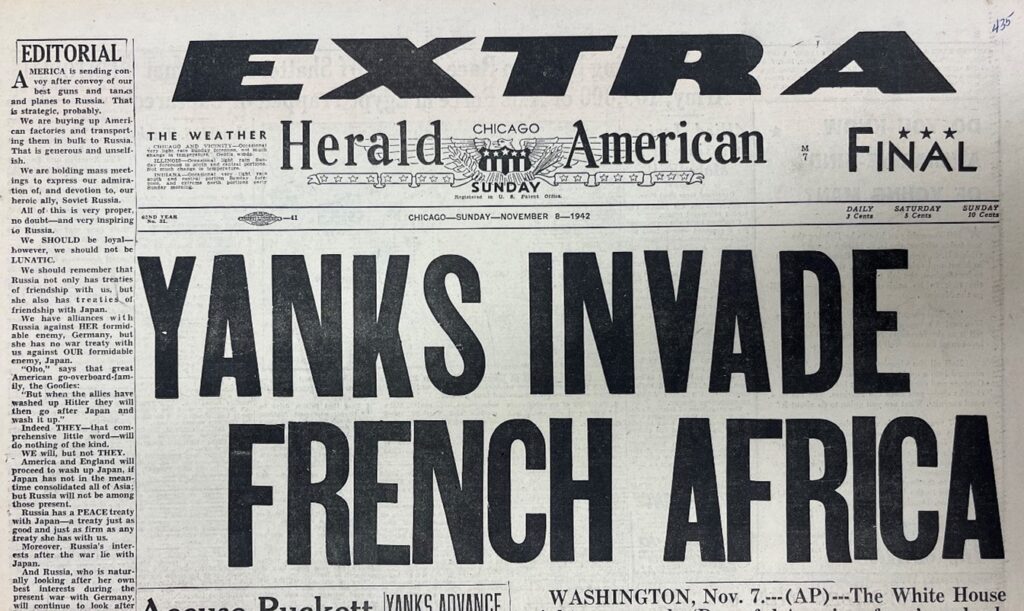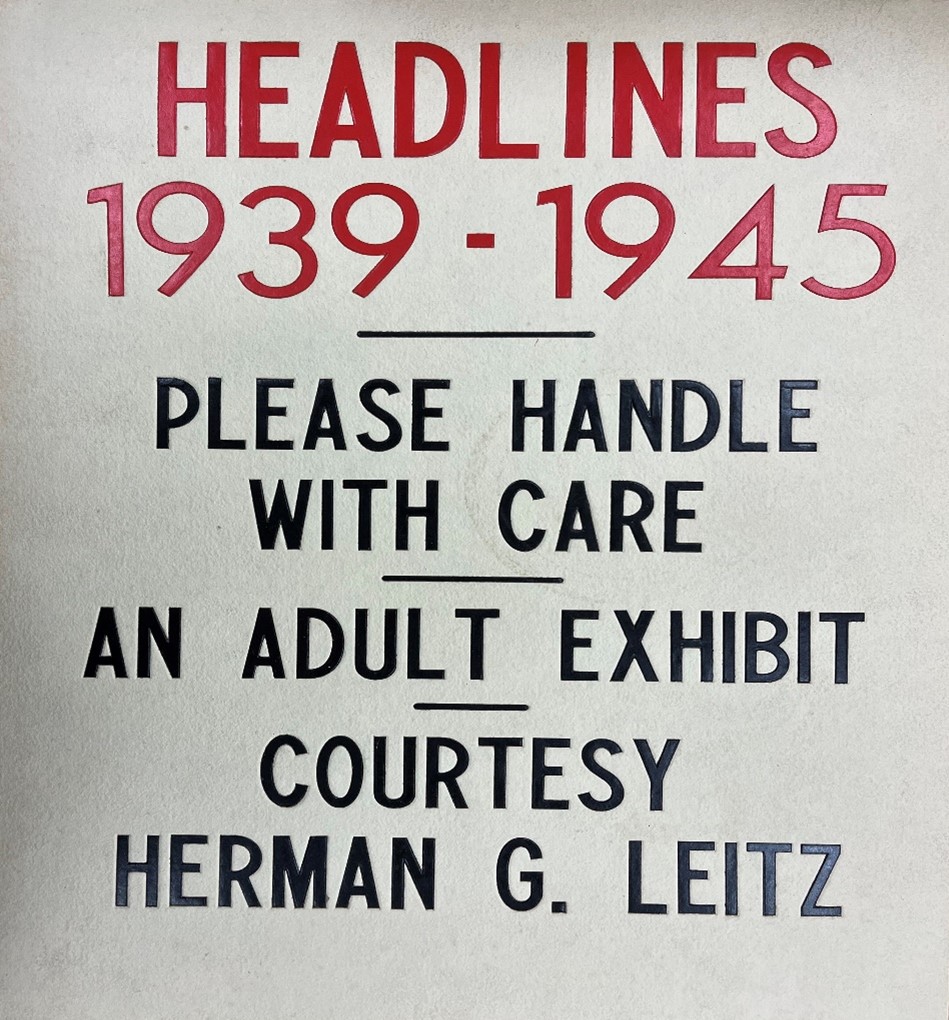By Montana Coward

(Courtesy of Carl Hartup/ The News-Sentinel August 14, 1985)
Herman G. Leitz, an Indiana man working as a security guard at the Studebaker plant during World War II, collected almost 1,000 American newspaper headlines documenting the war. Leitz was frustrated by his small recollection of the First World War, due to his young age during the conflict. Thus, when Leitz was twenty-six and the Second World War broke out, he chose to chronicle the second global conflict with headlines in order to remember it.
Leitz picked up each newspaper headline on the day they were printed. He did not collect every headline during the war period, but rather he chose the ones that he believed best represented the worldwide scope of the war. Leitz used newspapers from across the mid-west starting in 1939 through 1945 to document the war. He largely relied on the Chicago Herald-American and the Fort Wayne Journal Gazette for headlines. However, Herman Leitz used out-of-town publications when the Fort Wayne newspaper went on strike during the last months of the war.
One of the newspaper headlines in Leitz’s collection documents the impact of the first peacetime draft in the United States on the National Guard. Congress passed the Burke-Wadsworth Act, also known as the Selective Training Act of 1940, On September 16, 1940, requiring all men ages twenty-one through thirty-five to register for the draft. In September of 1940, before the peacetime draft, the National Guard numbered 240,000. By October, 60,000 men were drafted growing the National Guard to 300,000.
Another headline from the collection highlights the joint US- British invasion of French North Africa referred to as Operation Torch. Operation Torch took place in November of 1942, to clear a route for a future invasion in Southern Europe. The campaign’s ultimate goal was to establish a two-front war to relieve some of the Axis pressure from the Soviet Union. The 34th division was one of the key units involved in Operation Torch along with being one of the first US units to see combat in World War II. The unit was comprised of guardsmen from Iowa, Minnesota, North Dakota, and South Dakota. After successfully completing Operation Torch, the 34th Division continued fighting in North Africa in the Tunisia Campaign and throughout the European Theater.
After the war, Leitz traveled to schools and events displaying the newspaper headlines he collected to educate students about the war’s global impact. The newspaper headlines are over seventy-six years old today and continue to be a valuable resource for understanding and remembering World War II.
The newspaper clippings were donated to the National Guard Museum by Herman G. Leitz’s children. Visit the National Guard Memorial Museum for further information about the peacetime draft and National Guard’s role during World War II and throughout American history.




